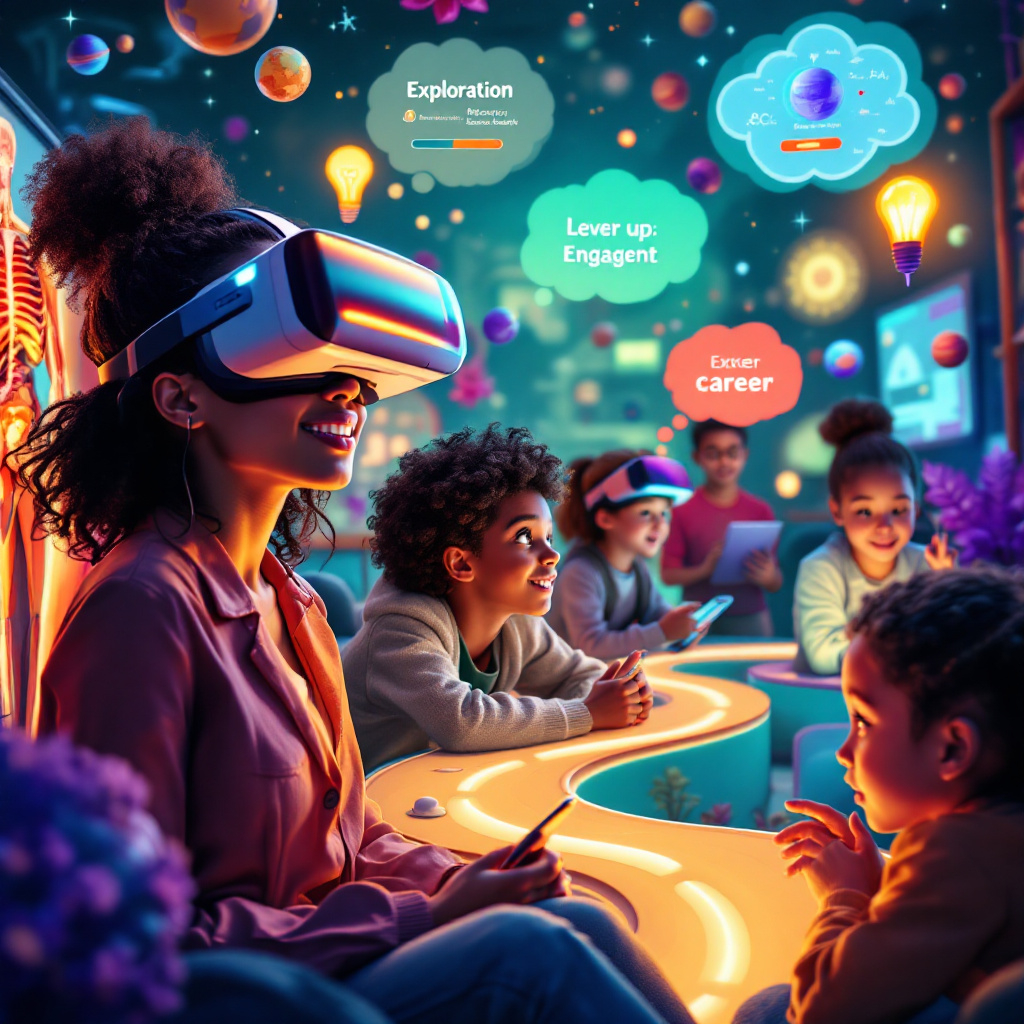The Power of Edutainment: How Fun Learning Shapes Careers and Fuels Success

Welcome! Let’s Play a Game First
Imagine you have two options for learning:
1. Reading a long textbook about space exploration.
2. Playing an interactive simulation where you build and launch your own rocket, making discoveries along the way.
Which one sounds more exciting? If you picked the second option, you’ve just experienced the magic of edutainment, a powerful blend of education and entertainment designed to make learning engaging, memorable, and fun.
Edutainment blends traditional education with innovative entertainment methods, creating dynamic and immersive experiences. This method is becoming an integral tool for making learning not only fun but more effective. As education continues to evolve, edutainment enhances academic environments and plays a significant role in shaping career paths.
The Significance of Edutainment in Modern Education
Traditionally, education often emphasized rote memorization and strict curricula. While these methods still have value, edutainment fosters curiosity and creativity, making learning an engaging and enriching experience. It encourages deeper understanding and long-term retention, especially when compared to purely passive learning methods.
Reflection: Consider your most engaging learning experiences. Were they centered around storytelling, interactive projects, or multimedia content? Reflecting on this can help you realize how edutainment has already shaped your learning preferences.
When students enjoy learning, they are more inclined to explore subjects deeply, retain key concepts, and develop passion-driven interests that could directly shape their future careers.
Edutainment as a Catalyst for Career Exploration
1. Storytelling as an Educational Tool
For centuries, storytelling has been a powerful way to convey information. Whether through historical documentaries, literature, or biographical films, narratives help students contextualize knowledge and envision real-world applications. These stories not only bring subjects to life but also inspire students to pursue specific career paths. For example, watching a documentary about NASA astronauts or the innovators behind tech giants may ignite a passion for space exploration or engineering.
Research Insight: Studies have shown that students who engage with story-driven content tend to remember information more vividly and for a longer time compared to those exposed to dry, fact-heavy texts.
2. Interactive Learning and Gamification
Educational platforms such as Duolingo (language learning) and Minecraft Education (STEM learning) are at the forefront of using gamification to transform traditional learning. These tools enhance engagement by allowing students to interact, experiment, and explore concepts in a hands-on, enjoyable way. Gamification increases motivation and helps students achieve deeper mastery over subjects by offering rewards and instant feedback.
Real-World Example: Many students cite Minecraft Education as a key influence in their interest in coding and engineering. The game teaches problem-solving and systems thinking in a way that feels more like fun than learning.
3. Digital Media as an Educational Resource
Platforms like YouTube (e.g., Kurzgesagt for science) and streaming services offering educational documentaries have revolutionized learning. With access to high-quality, engaging content, students can explore complex topics in visually stimulating ways, gaining insights from experts and experienced professionals. This type of content broadens their intellectual horizons and brings a wealth of knowledge beyond the classroom.
Example: A student interested in climate change might be drawn to a National Geographic documentary. Not only do they gain knowledge, but the narrative and visuals might spark a desire to pursue environmental science or policy.
4. Experiential Learning through Simulations
Practical, hands-on experiences, such as virtual science labs or medical VR simulations, offer students a chance to experiment safely and apply their knowledge in real-world scenarios. These experiences clarify career interests and build practical skills. Virtual reality (VR) allows students to step into complex environments, such as conducting a virtual surgery or exploring the human body in 3D.
Scientific Support: Research by the National Education Association highlights that immersive experiences such as VR can significantly boost student engagement, particularly in STEM fields, by providing real-life context to abstract concepts.
From Interest to Profession: How Edutainment Shapes Career Trajectories
The process of turning an academic interest into a viable career can be outlined as follows:
1. Exploration: Exposure to diverse topics through engaging media fosters curiosity.
2. Engagement: Interactive and immersive learning deepens interest in specific subjects.
3. Experimentation: Hands-on applications refine understanding and reveal strengths.
4. Expertise: Consistent learning and practice develop proficiency in chosen fields.
5. Career Application: Mastery of a subject leads to professional opportunities and career growth.
Career Path Example: A student first fascinated by the "Magic School Bus" series may pursue a career in environmental science, leveraging both their passion for nature and their interest in using technology to explore scientific concepts.
Considerations: The Balance of Fun and Rigor
While edutainment offers numerous advantages, it’s important to consider its limitations. Over-reliance on entertainment could potentially distract from the educational content or make it harder to focus on essential skills. Additionally, educators must ensure that interactive tools do not become a substitute for deep critical thinking and problem-solving.
Critical Question: How can we balance edutainment’s entertainment value with the need for rigorous education? The goal should be to find an equilibrium where learning remains both enjoyable and intellectually enriching.
Final Thoughts: Learning as a Lifelong Journey
In an era where passion-driven careers lead to meaningful success, edutainment serves as an essential bridge between academic exploration and professional achievement. By leveraging multimedia, gamification, and experiential learning, students can discover and cultivate their interests in ways that are both enjoyable and impactful.
As the education landscape evolves, embracing edutainment is not just an option, it’s a necessity for fostering innovation, critical thinking, and career readiness. What will your next learning adventure be?
Incorporating the power of edutainment allows learning to become a personalized, enjoyable experience that shapes careers. By aligning entertainment with education, we foster a generation of learners who not only excel academically but also develop the creativity and problem-solving skills needed for professional success. As technology and educational tools continue to advance, the potential for edutainment to shape future careers is limitless.
Because when learning feels like play, the possibilities are endless